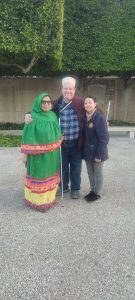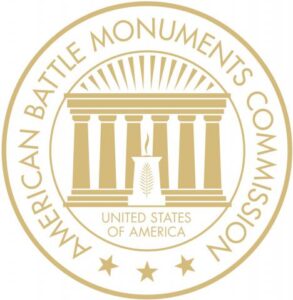As part of ABMC’s on-site services, the agency’s interpretive guides continuously work to refine the information they share about their site’s history and the stories of those commemorated to best resonate with visitors. Earlier this year, the interpretive guide at North Africa American Cemetery, welcomed Mariyam and Ali, a couple whose visit called for a more specific approach.
As the pair are both blind, the interpretive guide adapted the tour to focus on sensory elements, emphasizing sounds, touch, and the peaceful atmosphere of the cemetery. She guided them in feeling the Crosses, Stars of David, and names on the Wall Of the Missing (WOM), ensuring they remained deeply engaged with thoughtful questions throughout.
“A particularly meaningful moment occurred when they learned that Sergeant Hammond Richard commemorated on the wall of the missing shares the same seventh grandfather as the Ambassador,” she said.

“As Mariyam and I are both blind, the interpretive guide ensured, by providing vivid descriptions and tactile experiences, that our visit was equally meaningful,” said Ali. “At the Wall of the Missing, she described the layout of each entry: the individual’s name, dates of birth and death, hometown, military rank, and unit. She then gently guided our hands over the engraved letters, explaining the different fonts and the length of each inscription.”
“Later, she described the shape of a standard headstone, and then pointed out a headstone shaped as a Star of David, allowing us to feel the difference. In the map room, she traced the outline of North Africa, particularly Tunisia, on a map, so we could understand the region’s geography.”
“She and her colleagues went above and beyond to ensure that Mariyam and I experienced the cemetery as fully as sighted visitors,” concluded Ali.
“It is important to offer a significant experience to any of our visitors,” said Adrien Adams, superintendent at NAAC. “Her thoughtful and personalized approach made the experience truly impactful.”
 An official website of the United States government. Here's how you know.
An official website of the United States government. Here's how you know. 